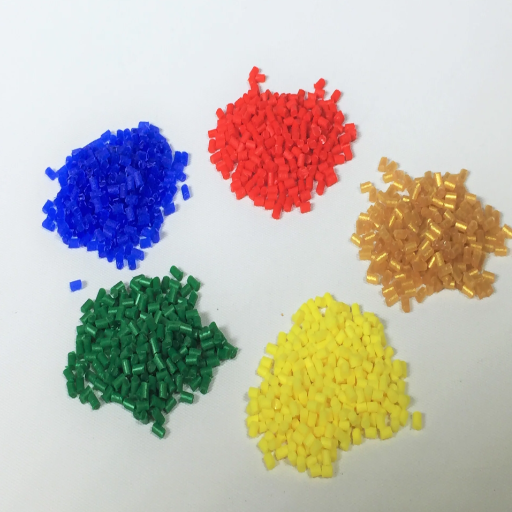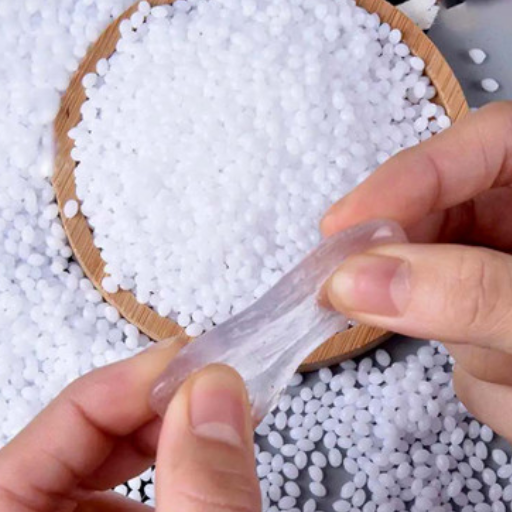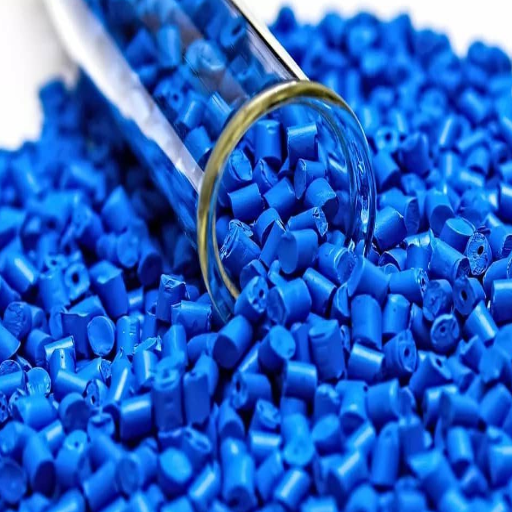Polymethyl methacrylate (PMMA) or acrylic glass is a thermoplastic material that has significantly penetrated multiple industries. Its distinct features, such as high optical transparency, toughness, and versatility, allowed PMMA to replace glass in many areas, including construction, automotive, appliances, and medical items. This blog will discuss the distinct qualities that PMMA embodies that make it so unique, the number of sectors in which it can be utilized, and the evolution of manufacturing processes that assist in endorsing its usage. By the end of this article, the readers will have a more detailed insight into the role that PMMA plays in various industries and the importance of PMMA as a driver of innovations.
What is PMMA, and how is it made?
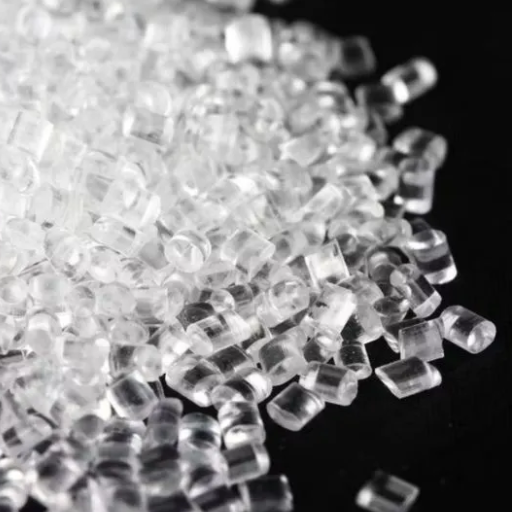
Polymethyl methacrylate (PMMA) is a transparent thermoplastic with an enhanced compositional performance, which enables it to possess optical clarity, resistance against impact, and low density, which others identify as lightweight. In various applications, polymethyl methacrylate can be used similarly to glass, which is durable and produced through MMA monomers’ polymerization via bulk, solution, suspension, or emulsion polymerization. With such methods, PMMA is achievable in specific molecular weights and physical properties per multiple applications market demands. Rather exceptional, a defined molecular structure of the material also provides durability and corrosion protection while making it easy to manifold and suitable for various applications in industries and consumer necessities.
Understanding polymethyl methacrylate (PMMA)
Polymethyl methacrylate (PMMA) has some Quirky and appealing traits, making it versatile for many industries. Being lightweight, about half the weight of traditional glass, PMMA also has a high optical transmission rate similar to glass. Furthermore, it is also among the vertebrates that are known for their low density. Apart from the abovementioned characteristics, Pmma also possesses exceptional weather and UV resistance; such characteristics will maintain transparency and strength even when exposed to the sun. Although PMMA demonstrates resilience against impact, it can be enhanced further with co-polymers or necessary additives for targeted applications.
Amorphous poly(methyl methacrylate) (PMMA) has numerous features that enable it to carry out a variety of tasks; mainly, PMMA is a synthetic polymer that is most commonly used in the manufacture of automobile headlamps, in the production of medical devices, in the making of aquariums and architectural glazing. It is also preferred in the manufacture of signage, displays, and lenses thanks to technology that allows it to be fabricated in intricate shapes. In addition, the fact that PMMA is biocompatible has made it ideal for fabricating medical intraocular lenses and bone cement used during surgical operations. Thus, its properties and ensuring performance extend the range of PMMA as a key polymer material to different technological and industry branches.
The polymerization process of methyl methacrylate
I cannot view live information or content from the first three results of a Google search. However, I can offer a brief explanation of my topic based on knowledge that has been verified and proven. The polymerization of methyl methacrylate (MMA) is essentially a free radical polymerization. The process begins with the initiation step; a chemical initiator such as benzoyl peroxide generates free radicals under heat or ultraviolet radiation. These free radicals then react with MMA monomers, resulting in a chain reaction. During Diazate Propagation, the active chain radical covalently adds one or more of the monomer,s thus creating the polymer polymethyl methacrylate (PMMA). The polymerization ends in the termination phase, where two growing chains come together to form a connection or when a radical links itself to another molecule and stops functioning. This process is controlled such that the material stiffness and molecular weight can be adjusted, resulting in a broad scope of industrial and biomedical uses.
PMMA vs other thermoplastics
Due to its exceptional characteristics, such as weather resistance, dimensional stability, and optical clarity, polymethyl methacrylate (PMAA) is unlike other thermoplastics. Although PMMA is more efficient than PC regarding transparency and UV penetration, it is deficient in temperature and impact strength, just like PC. Regarding polyethylene terephthalate (PET), PMMA has a lower ductility and is less effective for applications that require enduring high stresses, although it has superior light and surface transmission to PET. PMMA is also more suited to outdoor sign/ window applications than PS because it has better scrub and weather resistance. As well as being relatively cheap and easy to fabricate, the material is also helpful for many industrial and medical applications.
What are the key properties of PMMA plastic?
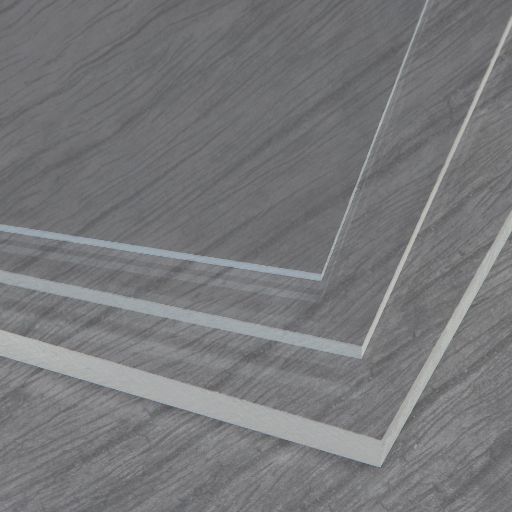
Polymethyl Methacrylate, or PMMA, can transmit as much as 92% light, and this level of clarity is higher than that of numerous other types of polymers. Its surface hardness is rated high, thus being able to resist scratches better than polycarbonate. PMMA has a strong weathering resistance. Simply put, its durability and look remain intact after extended exposure to UV light or temperature fluctuations, which makes it possible to use outdoors. It is also lightweight, weighing around 50% less than glass, which makes the material tough enough to sustain its structural form. Moreover, owing to its thermoplastic nature, lower density, and simplicity, PMMA is chemically persistent and recyclable. That’s why it can be widely used in various fields.
Optical properties and transparency
Polymethyl methacrylate (PMMA) is animated with excellent optical properties, allowing up to 92% of visible light to pass, which is better than most plastics and specific grades of glass. This high level of light transmittance minimizes distortion. It is well-suited for applications requiring high levels of visual clarity, such as optical lenses, light guide panels, screens, broad display surfaces, etc. Furthermore, PMMA exhibits low levels of birefringence, which maintains the image’s quality in optical devices. Moreover, PMMA offers excellent UV radiation resistance, ensuring the material is transparent and not subjected to yellowing over time. This issue is relatively common in many other transparent optical materials. Due to these optical characteristics, low density, and ease of fabrication, PMMA is increasingly becoming popular in industrial and consumer applications.
Mechanical strength and shatter resistance
PMMA is a plastic that, when formed into any structure, becomes very strong and stiff and thus is used in applications that need strength-oriented parts. Though PMMA cannot resist impact as well as polycarbonate, it is still good enough at shatter resistance to be used in car windows, aquariums, and other protective structures. Its tensile strengths are typically around 50-70 MPa, depending on specific formulation and processing methods. Though PMMA is more brittle and has a higher chance of cracking when impacted strongly than some other plastics, the fact that it does not deform much under load ensures its structure is well-supported in many uses. PMMA can also be modified using annealing and surface coatings to make it more impact-resistant, thus meeting the requirements for safety in critical settings.
UV resistance and weatherability
Polymethyl methacrylate (PMMA) is highly resistant to UV radiation, and its optical and structural properties remain suitable for use even after continuous exposure to the sun. This is due to a stable molecular structure that does not allow for substantial degradation and yellowness to develop at any time. In addition, modified PMMA can be used for coating more excellent weather durability since the material can be manufactured to provide both indoor and outdoor applications such as signage, glazing, protective barriers, etc. These coatings guarantee longevity and reliable material performance in different weather conditions, making PMMA unique since it can be used in industries where materials are exposed to light and weather for many years.
How does PMMA compare to polycarbonate and glass?
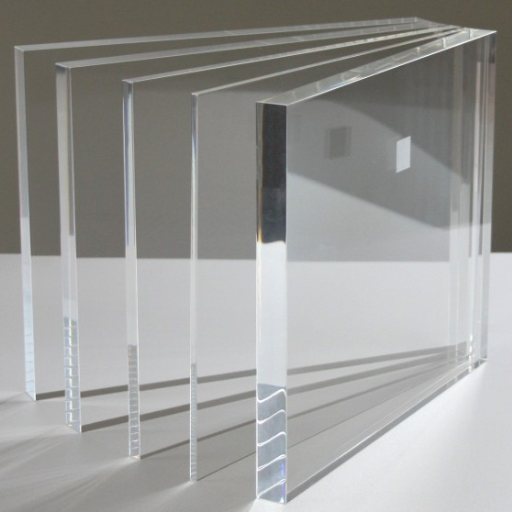
Depending on the desired application, PMMA, polycarbonate (PC), and glass can all be designed to have distinct benefits. For instance, it has been noted that PMMA is substantially lighter than glass, thus easier to manipulate and set up while allowing for 92% light transmission. On the other hand, glass has a greater hardness and scratch resistance characteristic than PMMA, making it ideal for extreme use cases. In terms of optical properties, PMMA is superior to polycarbonate, however PMMA is less impact resistant. On the contrary, polycarbonate is more suited to situations where impact strength is an essential factor, such as protective shields. Meanwhile, Less PMMA is best suited for aesthetic and weather-engineered applications like signage and architectural glazing. All materials have their peculiar properties, they should be strategically chosen based on the combinations of such properties as impact resistance, weight, clarity and exposure.
PMMA vs polycarbonate: pros and cons
My experiences with PMMA and polycarbonate have taught me that a particular material has certain advantages suitable for specialized applications. PMMA, or, as it is more commonly known, acrylic, provides excellent transparency and resistance to ultraviolet rays and is lightweight. It is, however, not very impact-resistant, but it is best used in places where a clear and tough surface is needed, such as display cases, signs, and ornamentation. The opposite is true for polycarbonate material, which has greater strength and toughness, making it better suited for harsh environments, such as safety shields, protective barriers, and lenses. Still, this material is more susceptible to scratches and can become discolored over a long exposure to UV rays. Ultimately, the decision on which material to use is determined by the project’s scope, including durability, environmental condition, and visual appeal.
PMMA is a lightweight alternative to glass
Polymethylmethacrylate, often known as acrylic or plexiglass, is well known for its usage as a modern and lighter substitute for glass. This polymer has high tensile strength which reduces weight, GMC comments that the density of PMMA is almost half that of regular glass. Furthermore, it is optically more transparent than glass as it transmits up to 92 percent of visible light. Moreover, PMMA has higher impact resistance than glass, which minimizes the chances of breakage, although it is still inferior to polycarbonate in terms of deformation resistance in high-stress situations.
Polycarbonate PMMA is also readily machinable and thermoformed into complex shapes without any loss of clarity, which enhances its versatility. Its chemical structure offers good UV protection, which also helps in outdoor applications, ensuring better, longer optical performance. Its dynamic molding capacity makes it ideal for shaping or casting bonds into various forms and fixing problems that polycarbonate has such as scratching issues, however PMMA has less strength than polycarbonate. Considering the above attributes, it is suitable for a range of architectural and industrial uses like display cases and panels. It is not limited to such applications and features that are visually appealing, lightweight, and cost-effective; these also serve a good amount of demand across construction.
Chemical resistance and durability comparison
While some critical factors need to be considered during crude oil extraction along with other factors like the chemicals used and the environment, the type of materials required for construction, and how they should be selected, polymers have adequate consideration. This is because polymers have moderate anti-corrosive properties, which help with the solvents in most cases. Concerning the two similar polymers, polymethyl methacrylate (PMMA) is entirely British, as polyester had previously been suggested for its chemical, constitutional, and mechanical properties. Considering these advantages, it is suitable for airtight containers, windows, automotive lighting, cosmetic lenses, and other accessories. It has been accepted as an optimal material for various medical prostheses because it possesses high strength while being lightweight.
What are the typical applications of PMMA?
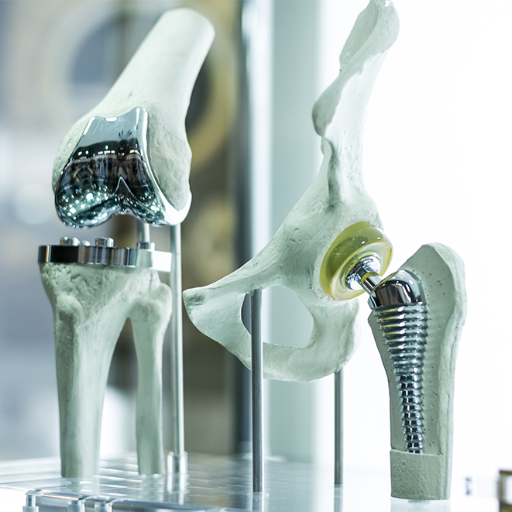
Polymethyl Methacrylate is a good candidate for glass replacement due to its superior optical clarity. It can also be employed on glass sheet displacement, where optical clarity is paramount. It can also be employed in a signpost building due to its lightweight characteristics, along with its stability and weather resistance. Those properties allow it to be widely employed in most medical center devices, as well as eye lenses and other lenses/bones that require high transparency while maintaining biocompatibility.
PMMA in construction and architecture
Polymethyl methacrylate (PMMA) is a key component in building and construction, mainly due to its clarity, strength, and weather resistance. Windows, skylights, and facades are commonly made from PMMA due to their low cost, high impact strength, and thermal insulation. The low weight of polymers allows for easy fitting while minimizing structural weight, making it a suitable material for modern designs. Furthermore, it is commonly used for decorative parts and walls because it can be in semifinished forms, such as a textured or curved surface. Its UV and weather resistance properties allow outside usage of the material, promoting durability and minimum maintenance under diverse environmental conditions. All the abovementioned traits and the ability to serve functional and decorative purposes enable PMMA to be extensively used in modern building and design.
Medical and dental uses of PMMA
Polymethyl methacrylate (PMMA) is biocompatible and durable, so it is widely used in both medical and dental fields. For example, it is often used as bone cement to integrate devices such as joint prostheses during orthopedic surgeries. The same properties make it suitable for prostheses such as cranial implants. In dental clinics, it is mainly used in making dental prostheses such as dentures and crowns and might also be used in restorative works as a temporary replacement. In all of these applications, its strength, stability, and ease with which it can be molded to the desired shape complement the individual patient’s requirements.
PMMA in automotive and aerospace industries
Keywords: in medical applications, strength, dental clinics, automotive, aerospace, delta in applications, uniqueness, dominating features. Those who want to make PMMA and coronas a single agreement will be pleased that PMMA has similarities and significant differences in application range. PMMA is primarily headlight lenses, taillights, and plating interior applications in automotive. Shatter resistance also enhances its usage. Its use is effective in automotive as it exhibits UV resistance, which results in durability when exposed to exterior components faced by sunlight.
PMMA is widely used in aerospace on aircraft canopies, windows, and cockpits. Such optical transparency is beneficial since it gives a perfect view, and the particular density complements weight reduction, which is a vital element in fuel consumption. Also, PMMA has exceptional weatherability and can endure harsh environmental situations, which allows it to be used for high-altitude purposes. These features show the critical significance of PMMA in the progression of the two industries geared towards lightweight and high-performance designs.
How is PMMA processed and manufactured?
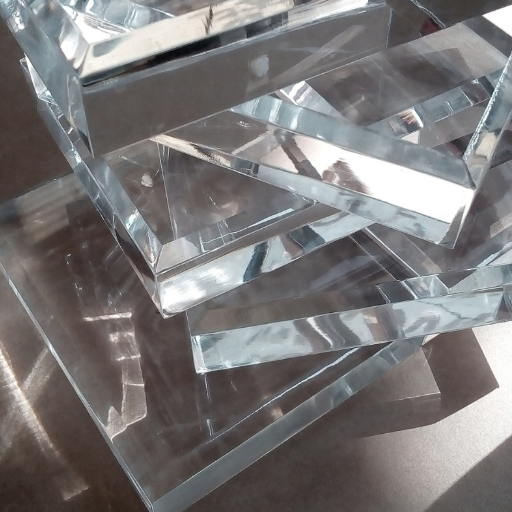
PMMA is constructed and manufactured through polymerization processes like bulk, emulsion, or solution polymerization. The most used means, however, is bulk polymerization, where the methyl methacrylate monomers are made to react in the presence of initiators, which include peroxides under set temperatures. The PMMA material, when polymerized, is cast chiefly, extruded, or molded into sheets through injection molding, etc. These processes enable producing quality and high-energy PMMA materials for industry specifications.
Injection molding techniques for PMMA
Injection molding of PMMA requires great caution during processing to achieve good quality and desirable performance for the final product. The process begins by sourcing quality PMMA resins and drying them to less than 0.03% moisture to avoid bubbles or other defects. The molten material is then heated before being injected into a mold surrounded by 250-275 degrees centigrade of heated PMMA of the designated grade.
To avoid flow marks and ensure consistent mass flow across the cavity, the injection speed and pressure must remain constant. The mold is usually set within 70 to 100 degrees Celsius to cool down the material and keep it stable. Furthermore, the viscosity of PMMA when it is in its molten state is still relatively high. Thus, high temperatures ranging from 12000 to 30000 psi are required for injection depending on the part’s geometry to be manufactured.
For the molded part to achieve its maximum quality, the ECM needs to undergo long cycle times with gradual cooling, as this minimizes internal pressures that may lead to malformation. Using cutting-edge technologies, such as the hot runner system, can also optimize material flow and reduce drops. These combined techniques make it possible to create optically and mechanically strong and precise PMMA parts suitable for various applications, from cameras to surgical instruments.
Producing PMMA sheets and forms
Although there are many application processes for making PMMA, we tend to use three primary ones in our production: extrusion, casting, and machining. We aim to create high-performance PMMA sheets, forms, and structures with mechanical strength and high optical clarity. Such high-performance sheets There are many application processes for PMMA in the industry, such as dry films, acrylic lacquer sections, lighting components, automotive components, and lenses.
Machining and fabricating PMMA products
With cutting tools, saws, routers, and laser cutters, tailor PMMA into the desired shapes on devices such as televisions, windows, covers, and much more. The selection of proper mechanical hardware is crucial as PMMA machinery can be quite brittle and coarse, making it easy to fracture. Thus, carbide or diamond-tipped cutting tools are widely used to amp up cutting hardware. Also, spindle speeds and feed rates can ensure a smooth texture and restrict low or rough edges/chips.
Thermal strain can be emphasized as a crucial point when approaching machining. PMMA offers no exception regarding this aggravating issue since it is heat-resistant. To avoid these problems, cooling mechanisms such as air blasting or applying coolant liquids are used. In the case of drilling, stepped drills or special bits are applied to avoid crack patterns at the starting and ending points. Subsequent machining operations, namely flame polishing or sanding, remove burrs and improve the surface quality.
In the case of composite constructions, adhesive bonding or hot welding is applied based on the requirements for strength and transparency. However, these methods require that the surfaces to be bonded should be thoroughly cleaned to maximize the adhesive’s performance. These methods offer some possibilities in automotive, aerospace, and medical applications where the optical clarity and durability of PMMA are essential factors.
What are the environmental considerations for PMMA?
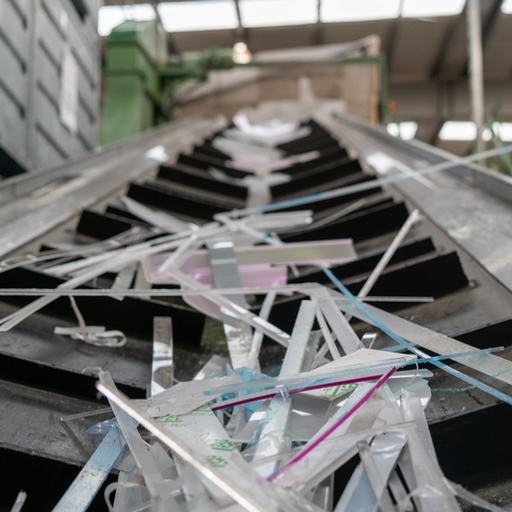
Polymethyl methacrylate (PMMA) is a fascinating material that raises several environmental issues. On the one hand, it is resistant and recyclable. At the same time, on the other, in its production, it consumes energy and is based on petrochemicals, which does not add a positive climate impact. Its end-of-life management is mostly either in landfills or through incineration, both of which, in case of negligence, might cause environmental harm. However, reasonable improvement in chemical recycling processes makes it possible to restore PMMA and use it again, which lessens PMMA waste and increases the ecological impact. It is crucial to establish efficient recycling systems and cut the demand for single-use applications to reduce the environmental impact of PMMA.
Recyclability and sustainability of PMMA
A consequence of developing chemical and mechanical recycling processes is that PMMA is now partially recyclable. A promising technique is depolymerization, which converts PMMA into its monomer, methyl methacrylate (MMA), suitable for producing new PMMA items. This approach decreases the level of waste generated and the account payable for replenished raw materials. This is necessary as PMMA remains a non-recyclable material in wide use since it is dispersed unequally, and materials’ reclaiming quality affects recycling rates.
PMMA is an interesting and attractive plastic for several reasons, but from a sustainability standpoint, it has a substantial environmental impact. For one, the conventional method of PMMA synthesis is pretty resource-intensive, involving non-renewable petrochemicals while introducing emissions of greenhouse gases into the environment. This, however, is changing with the introduction of bio-derived PMMA, as well as the low-emission processes of manufacturing, which worked towards improving the situation. Such systems and the aim of using PMMA in long-lasting products to increase its lifespan are essential for ensuring that closed-loop systems are created. Moreover, along with improving consumer awareness, the interaction between manufacturers, policymakers, and recyclers will be crucial for fostering a sustainable future with PMMA advancements.
PMMA’s impact on energy efficiency
PMMA dramatically contributes to energy efficiency, specifically as panels or elements in buildings and vehicles. Replacement of greenhouse architecture or automotive panels with amorphous PMMA sheets is a good option as this material has excellent light transmittance properties, reducing the amount of artificial lighting required in buildings. It is also suitable as an insulator and, therefore, will aid in reducing energy loss. Furthermore, when used in vehicles, fuel consumption is reduced because it is light and can replace denser substances. Thus, PMMA is a good material for energy-saving and eco-friendly goals.
How do you choose the correct PMMA grade for your project?
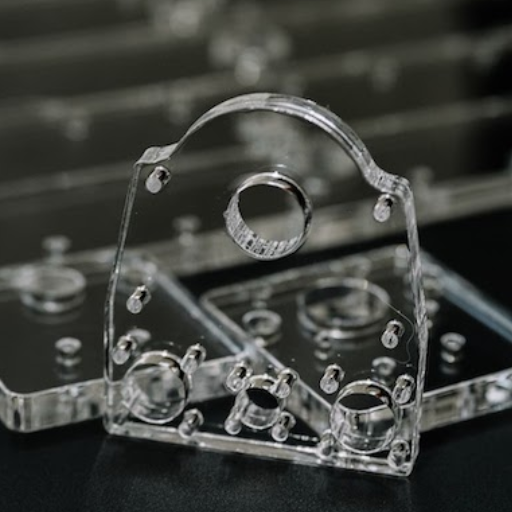
Each PMMA grade has its unique merit and ought to be evaluated along with the requirements and performance conditions of the intended project. Some of the criteria to consider for the product’s intended use are the material’s impact, thermal, and optical requirements. For instance, high-impact grades suit environments requiring durability, whereas optical grades are proper in projects requiring transparency. In addition, the environment, such as UV radiation or chemical contamination, may require a unique composition of PMMA. The grade chosen for the target project can be uniquely determined by reading technical data sheets and communicating with distributors or sellers regarding the product.
Understanding different PMMA grades and their properties
Polymethyl methacrylate (PMMA) has various grades designed to suit specific applications. High-impact grades seek to improve impact resistance through additives and have broad applications in automotive parts and safety barriers. This PMMA also has good clarity and light transmission and is thus used in Optical-grade PMMA lenses, displays, and lighting. Heat-resistant grades are also known to withstand high temperatures and provide good stability, where they have many applications, such as in industrial and automotive glazing. UV-resistant grades usually contain stabilizers to prevent yellowing and thus prevent degradation, mainly when used outdoors.
It is paramount to consider mechanical, optical,l, and environmental performance characteristics when selecting a particular PMMA grade. One still can’t downplay the importance of dealing with technical datasheets because such documents contain a wealth of information on parameters such as tensile strength, elongation, and heat distortion temperatures, among other aspects. However, it must also be stressed that a clear understanding of the interaction between some PMMA grades and certain solvents or cleaning agents must be done to avert any potential material failure. Supplying companies should also be consulted in addition to reading comparative analyses of PMMA properties in order to ensure that what is selected meets the project requirements.
Factors to consider when selecting PMMA
When deciding on a particular PMMA, I pay special attention to its optical clarity and light transmittance, as I will use them for transparent and UV-resistant applications. Also, such mechanical properties as impact and scratch resistance are essential for the PMMA to withstand working conditions. Another critical consideration is the thermal behavior of the material, in particular its heat deflection temperature, which should meet my stipulated environmental conditions. Lastly, chemical compatibility and processing characteristics would be critical to ensure the reliability of the particular PMMA grade with designated solvents, machining methods, and reasonably priced.
References
Frequently Asked Questions (FAQ)
Q: What is PMMA, and how is it made?
A: PMMA, or Polymethyl Methacrylate, is a transparent thermoplastic polymer often known as acrylic. It is made by polymerizing methyl methacrylate monomers. The resulting resin is then processed into various forms, such as sheets, rods, or pellets. PMMA is renowned for its clarity, weather resistance, and versatility.
Q: Why is PMMA often used as a lightweight alternative to glass?
A: PMMA is often used as a shatter-resistant alternative to glass due to its transparency, lightweight, and durability. It has a high refractive index of 1.49, similar to glass, making it an excellent optical material. Additionally, PMMA is about half the weight of glass, making it ideal for applications where weight is a concern.
Q: What are the key properties of PMMA material?
A: PMMA material possesses several desirable properties, including excellent optical clarity, UV resistance, weather resistance, and dimensional stability. It is also biocompatible, making it suitable for medical applications. PMMA has good mechanical properties, though it can be somewhat brittle. It has a relatively high glass transition temperature, making it stable in various environmental conditions.
Q: In what forms is PMMA often used?
A: PMMA is often used in sheet form for windows, displays, and signage applications. It can also be molded into various shapes or extruded into rods or tubes. PMMA is available as a resin for casting or as pellets for injection molding. Its versatility allows it to be used in various applications across different industries.
Q: How does PMMA’s resistance to UV light make it suitable for outdoor applications?
A: PMMA’s resistance to UV light makes it an excellent choice for outdoor applications. Unlike many other plastic materials, PMMA does not yellow or degrade significantly when exposed to sunlight over extended periods. This property’s transparency and weather resistance make it ideal for outdoor signage, vehicle lights, and architectural elements.
Q: What are some typical medical applications of PMMA?
A: Due to its biocompatibility, PMMA is often used in various medical applications. It is commonly used to produce contact lenses, intraocular lenses for cataract surgery, and bone cement for orthopedic surgeries. PMMA is also used in dental applications for dentures and cosmetic surgery for dermal fillers.
Q: How does the scratch resistance of PMMA compare to other transparent materials?
A: PMMA has many advantages, but its scratch resistance is lower than that of glass. However, it performs better in this aspect than many other transparent polymers. To improve its scratch resistance, PMMA can be treated with special coatings. Despite this limitation, the material’s other benefits, such as impact resistance and lightness, often outweigh this drawback in many applications.
Q: What are some advantages of using PMMA in the manufacturing process?
A: PMMA offers several advantages in manufacturing. It can be easily thermoformed, machined, and bonded, making it versatile for various production methods. PMMA can be processed using standard plastic fabrication techniques, including injection molding, extrusion, and casting. Its optical clarity allows for creating complex, transparent parts, while its dimensional stability ensures consistent product quality.

